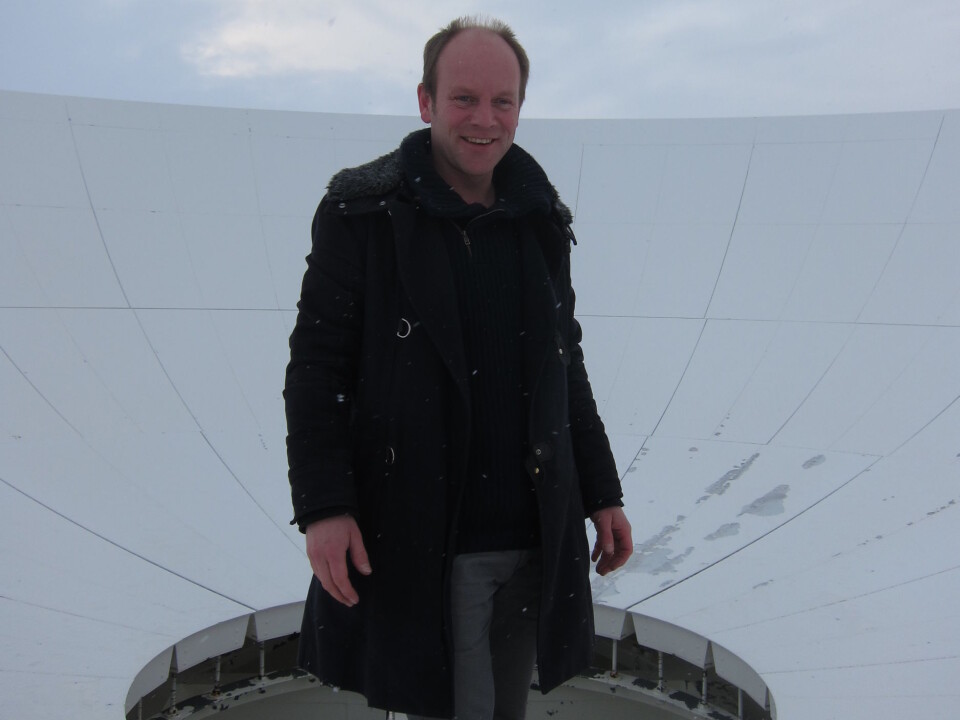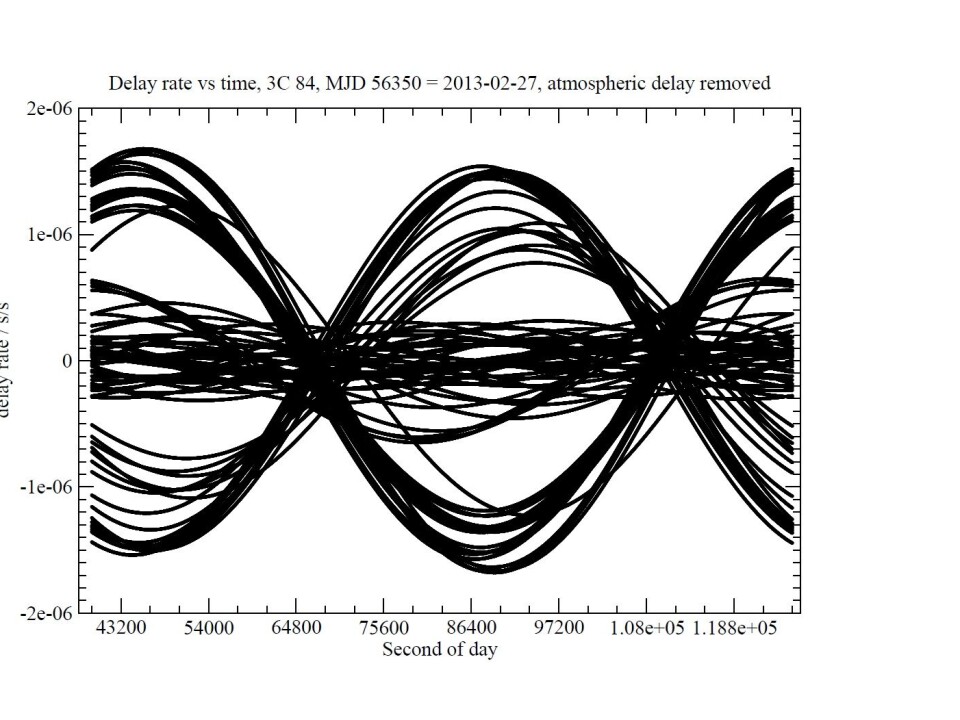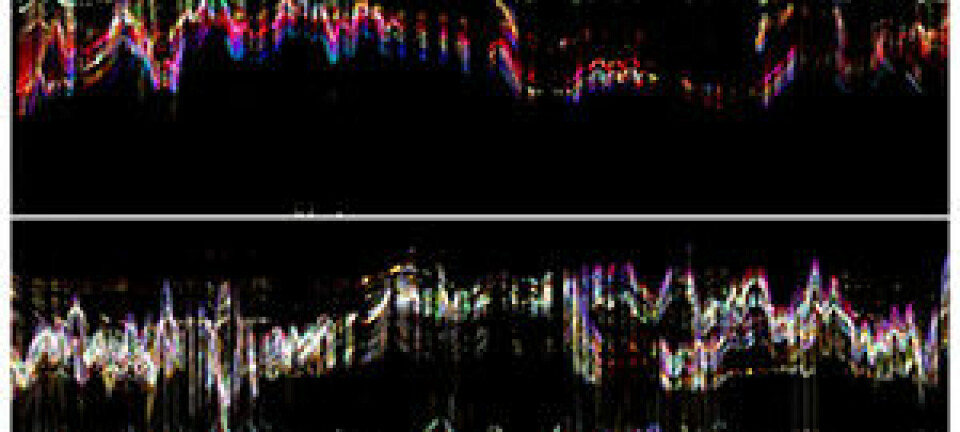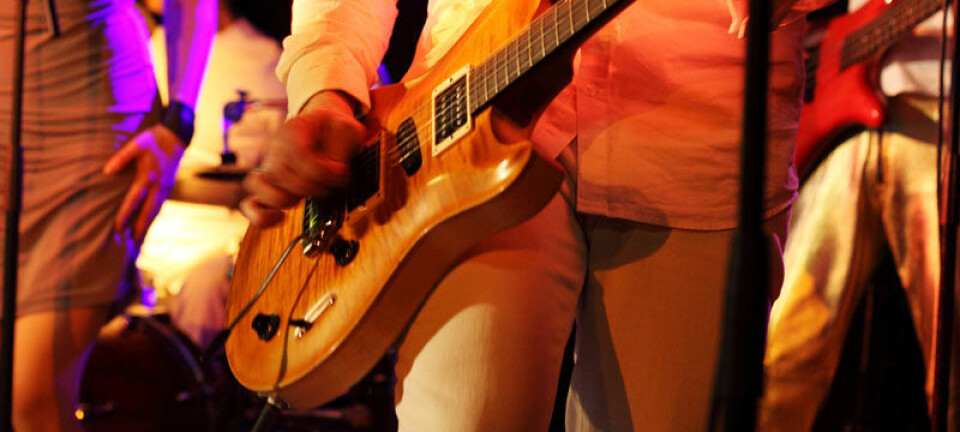An article from Norwegian SciTech News at NTNU
A symphony of stars
A researcher has composed a piece of music that plays for seven consecutive years based on how gigantic antennas on the Earth rotate to find the most powerful stars in space.
Denne artikkelen er over ti år gammel og kan inneholde utdatert informasjon.
The music is so in tune with the sky that you can actually hear the Northern Lights in the piece.
“Humans have always used the stars to navigate,” says professor Øyvind Brandtsegg.
Listen to the sound of the movement of a star.
The brightest stars in the sky
In addition to being a professor in music technology, Brandtsegg is a sound artist. He was last observed under the Flower Bridge in Trondheim, Norway, wearing a blue jumpsuit and boots, and directing two climbers who hung up speakers and microphones that would allow the bridge to talk to passers by.

The sound of a person’s steps crossing the bridge was set up to trigger a recording of someone else crossing. Blomsterbrua was thus transformed into a sound bridge.
But this time Brandtsegg has travelled even further than the closest bridge, all the way to outer space. He is making music based on the movement of gigantic antennas on Earth that rotate to find the most powerful stars in the sky.
These stars are called quasars.
Looking for the position of the Earth
“Quasars are the most powerful stars in space,” says Brandtsegg.

“There’s a whole network of antennas around the globe that are constantly pointing to quasars. This is done so that astronomers can calculate the position of the Earth in space every day,” says Brandstegg.
It turns out that there is a group in Bonn, Germany working on calculating the exact position of the Earth in space.
This isn’t an easy task. The Earth spins and tilts, so how is it possible to measure how the Earth has moved anyway?
In the distant past
The answer is found by examining stars several billion light years away.
“Stars that are that far away from Earth barely move at all relative to the Earth, and so they can be used as fixed points,” explains Brandtsegg.
A quasar can emit as much radiative energy as several average sized galaxies combined.
Astronomers have found more than 60 000 quasars. The closest one is 780 million light years away, while the furthest one is 13 billion light years away.
"Since it takes a long time for light to travel such great distances, we observe the quasars as they were long ago, like seeing the universe in the distant past", says the researcher.
Starlight caught by antennas
So starlight from the distant past is used as measurement points to determine the position of the Earth in space. The starlight is captured by antennas, but the signal is full of noise and disturbances.
“One cool thing I learned is that no single antenna alone can give us the answer. The signal from a single star is buried in noise, and doesn’t make sense at all on its own," says Brandtsegg.
He says that finding the signal from one antenna isn’t like trying to find a needle in a haystack, but like trying to find hay in a haystack.
"Only when signals from two antennas that are looking at the same star are compared are we able to make sense of the signal," he says.
"I think there’s something poetic about humans finding techniques to make sense of such chaos. It was in this process of making sense that I found the idea for the music installation."
Music is the sound of mathematics
Some of the music is the unfiltered white noise from one of the antennas. Other parts of the composition are based on the rotation of two antennas as they try to find the position of a star.
“I have try to translate the rotation of the antennas into music as simply as possible. Every star has a corresponding latitude and longitude on the surface of the Earth. All of the stars have their own notes and volume. The high notes are at the North Pole, while the lowest are at the South Pole. The choreography of the different notes is determined by how the astronomers operate the antennas," explains the researcher.
"So I put all of this into a computer program. The music is the sound of the astronomers’ mathematics for determining the Earth’s position in space".
Hunting for a good idea
So, how did the professor come up with the idea to use stars to make music?
“Public Art Norway called me. They asked if I wanted to create an installation for the Norwegian Mapping Authority,” says Brandtsegg.
In a glass corridor in the Norwegian Mapping Authority’s headquarters there are twelve speakers that play the music continuously.
“The Norwegian Mapping Authority had quite a nice collection of art already, but mostly images. They wanted me to create a more high-tech piece of art, something related to what the Mapping Authority actually does. I said yes,” he says.
During his hunt for a good idea, he travelled to Svalbard and saw the Mapping Authority’s star antennas. Then he visited the Max Planck Institute in Bonn. Then he went home and thought.
Now all of the employees at the headquarters of the Norwegian Mapping Authority in Hønefoss can listen to the rotation of the antennas in a glass corridor between two of the buildings, where Brandtsegg has placed 12 speakers. The music follows the rotation online, and when there are Northern Lights, you can clearly hear them.
Messy signal from the Northern lights
“The Northern Lights are caused by a solar storm, and the electromagnetic radiation bends the signal from the stars as it approaches the antennas. This makes the astronomers’ program behave differently. Since the music is based on this program, the music also become messy,” says Brandtsegg.
One day went he went on the website of the installation, he heard it clearly.
“Then I knew there were Northern Lights on Svalbard,” says Brandtsegg.
Translated by: Nancy Bazilchuk


































